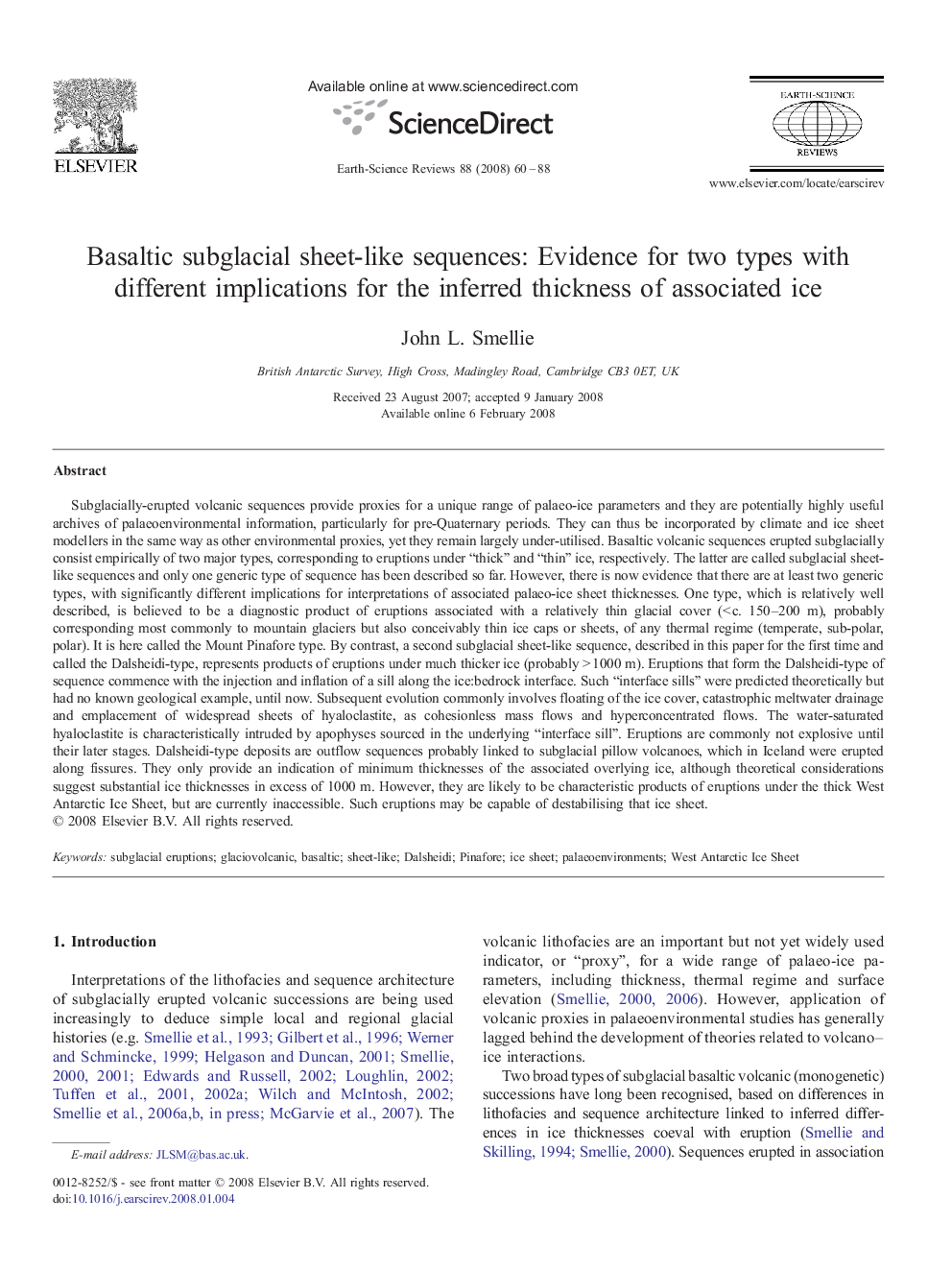| کد مقاله | کد نشریه | سال انتشار | مقاله انگلیسی | نسخه تمام متن |
|---|---|---|---|---|
| 4726326 | 1640034 | 2008 | 29 صفحه PDF | دانلود رایگان |

Subglacially-erupted volcanic sequences provide proxies for a unique range of palaeo-ice parameters and they are potentially highly useful archives of palaeoenvironmental information, particularly for pre-Quaternary periods. They can thus be incorporated by climate and ice sheet modellers in the same way as other environmental proxies, yet they remain largely under-utilised. Basaltic volcanic sequences erupted subglacially consist empirically of two major types, corresponding to eruptions under “thick” and “thin” ice, respectively. The latter are called subglacial sheet-like sequences and only one generic type of sequence has been described so far. However, there is now evidence that there are at least two generic types, with significantly different implications for interpretations of associated palaeo-ice sheet thicknesses. One type, which is relatively well described, is believed to be a diagnostic product of eruptions associated with a relatively thin glacial cover (< c. 150–200 m), probably corresponding most commonly to mountain glaciers but also conceivably thin ice caps or sheets, of any thermal regime (temperate, sub-polar, polar). It is here called the Mount Pinafore type. By contrast, a second subglacial sheet-like sequence, described in this paper for the first time and called the Dalsheidi-type, represents products of eruptions under much thicker ice (probably > 1000 m). Eruptions that form the Dalsheidi-type of sequence commence with the injection and inflation of a sill along the ice:bedrock interface. Such “interface sills” were predicted theoretically but had no known geological example, until now. Subsequent evolution commonly involves floating of the ice cover, catastrophic meltwater drainage and emplacement of widespread sheets of hyaloclastite, as cohesionless mass flows and hyperconcentrated flows. The water-saturated hyaloclastite is characteristically intruded by apophyses sourced in the underlying “interface sill”. Eruptions are commonly not explosive until their later stages. Dalsheidi-type deposits are outflow sequences probably linked to subglacial pillow volcanoes, which in Iceland were erupted along fissures. They only provide an indication of minimum thicknesses of the associated overlying ice, although theoretical considerations suggest substantial ice thicknesses in excess of 1000 m. However, they are likely to be characteristic products of eruptions under the thick West Antarctic Ice Sheet, but are currently inaccessible. Such eruptions may be capable of destabilising that ice sheet.
Journal: Earth-Science Reviews - Volume 88, Issues 1–2, May 2008, Pages 60–88